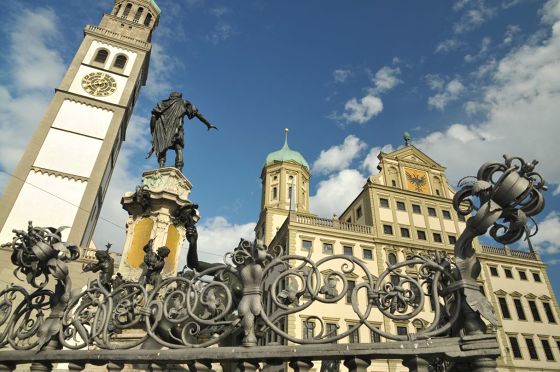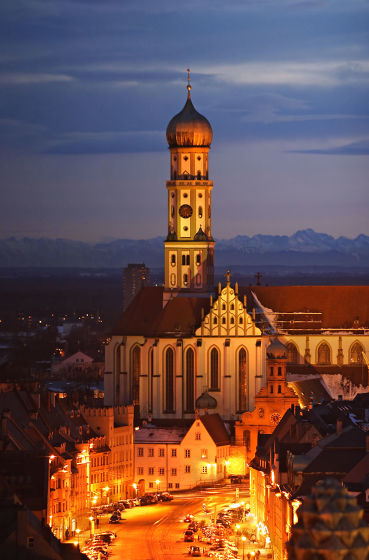cGMP: Generators, Effectors and
Therapeutic Implications
About Augsburg
Augsburg was founded more than 2000 years ago by the Romans and is one of the oldest German cities. It is Bavaria´s third largest city after Munich and Nuremberg. The city flourished during the renaissance, when artists such as Hans Holbein the Elder or Hans Burgkmair the Elder made it into one of the cultural centers of Central Europe.
During this time, some of the city´s most important buildings were constructed, financed by the Fugger and Welser merchant and banker families. Elias Holl built the city hall, one of the most important profane Renaissance buildings north of the Alps. The Fuggerei was founded and became one of the oldest (and still used) social housing complexes of the world.

© Regio Augsburg Tourismus GmbH
During the Reformation, Augsburg was crucial during several events. First, when Martin Luther refused to withdraw his theses in an interview with Cardinal Cajetan during the imperial diet of 1518; second when the Augsburg Confession (Confessio Augustana), a Protestant statement of faith penned by Luther’s collaborator Philipp Melanchthon was presented to Emperor Charles V during the imperial diet of 1530; third with the Religious Peace of Augsburg, a settlement between the emperor (represented by his brother, King Ferdinand) and the empire’s estates during the imperial diet of 1555. The Religious Peace of Augsburg finally provided safeguards for Catholic minorities in imperial cities, thus paving the way for the institutionalized coexistence of the Lutheran and Catholic faiths in Augsburg. Finally in 1999, the Joint Declaration on the Doctrine of Justification (JDDJ), a historic agreement which effectively resolved one of the key theological conflicts of the Reformation was signed by Lutherans and Catholics at St. Anna´s Church in Augsburg.

© Regio Augsburg Tourismus GmbH
The water systems of Augsburg were built since the 14th century and form a unique network of canals, water towers, pumping equipment and hydroelectric power stations which have provided drinking water and power for the city for centuries. Since 2019, the Water Management System of Augsburg are a UNESCO World Heritage Site.
The impressive industrial architecture from the 19th century provides a nice contrast to the epochs of Renaissance and Rococo. Augsburg used to be a center of industrialization.
Most German children know Augsburg for its famous marionette theatre, the “Augsburger Puppenkiste”.
Augsburg today is a vibrant industrial city, known mainly for high technology products.
It is home to two universities, Augsburg University and Hochschule Augsburg (applied sciences).
